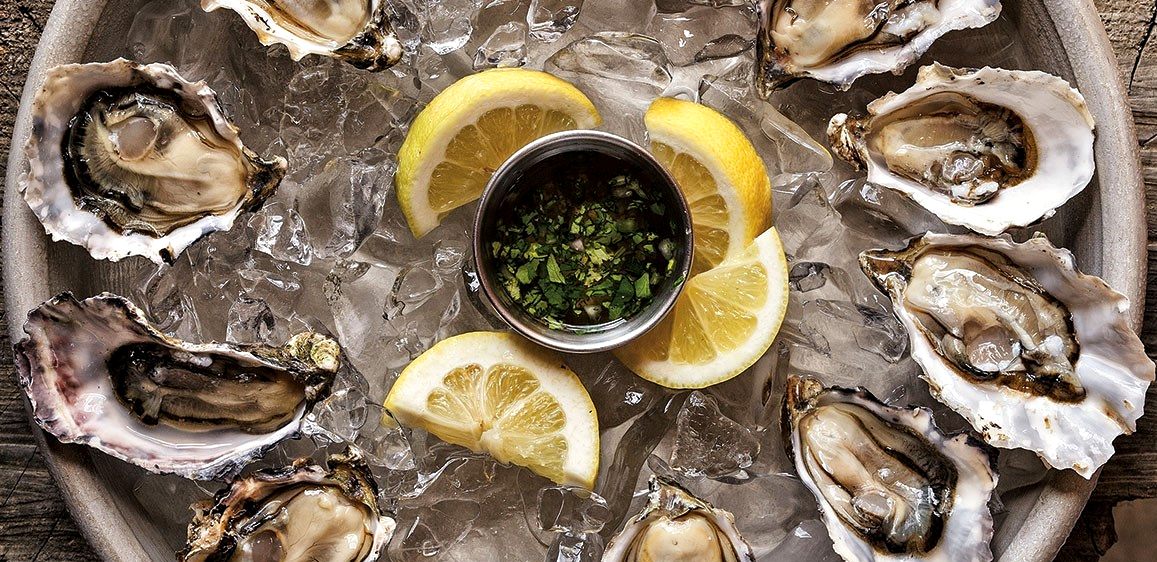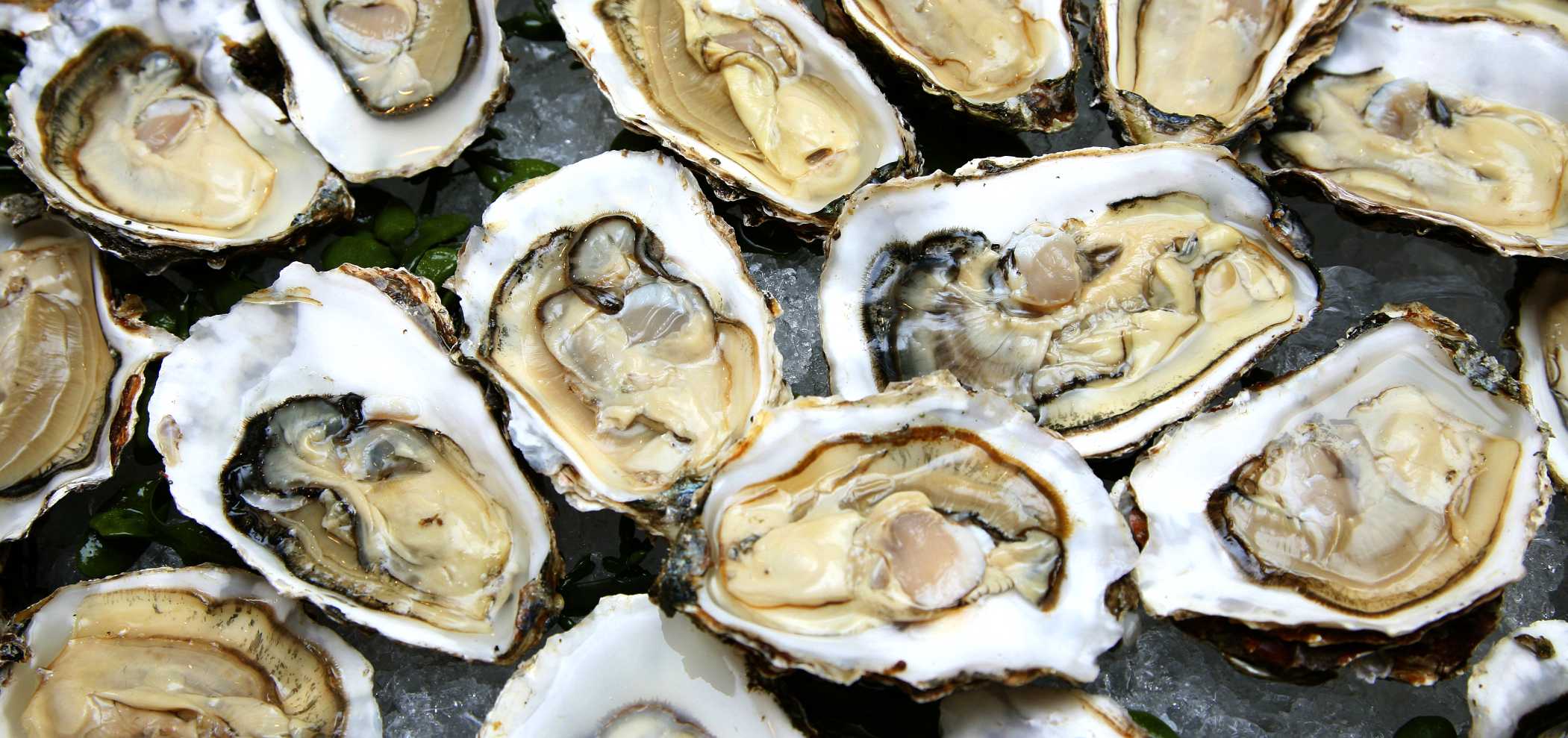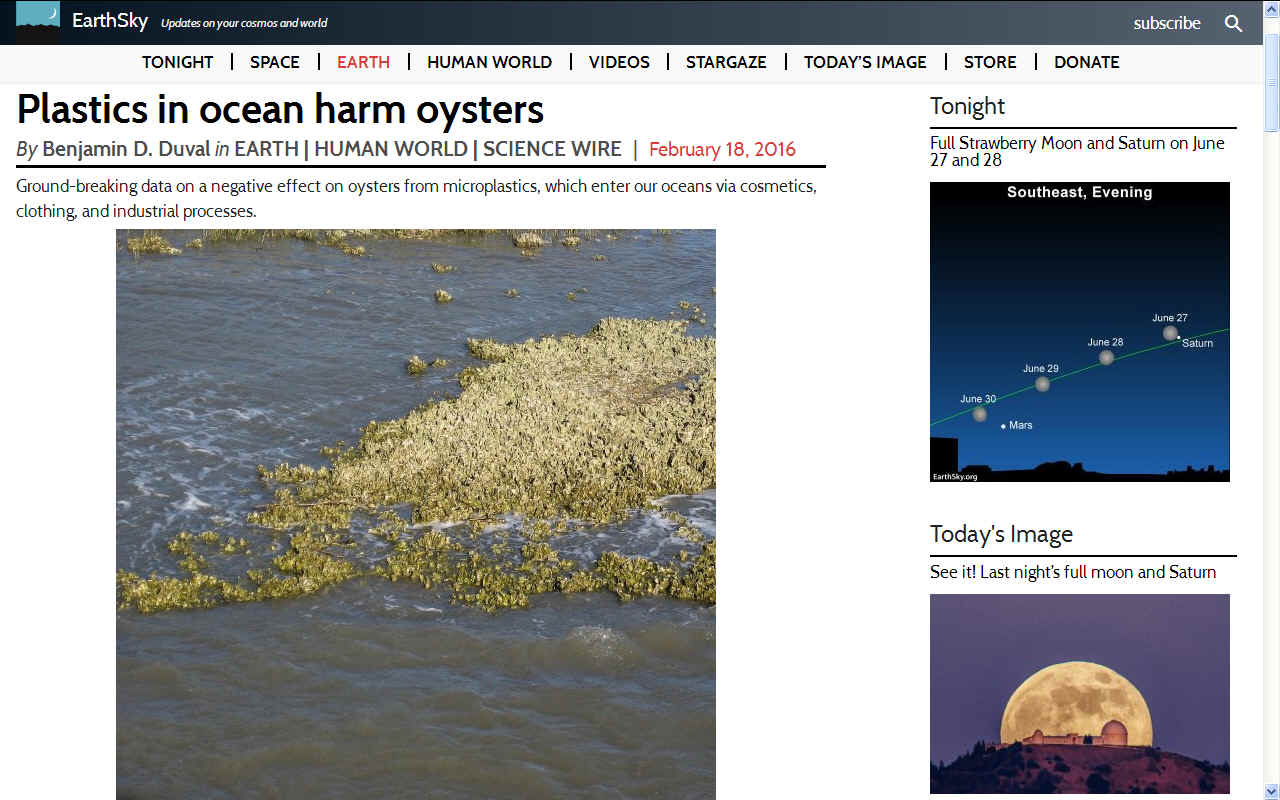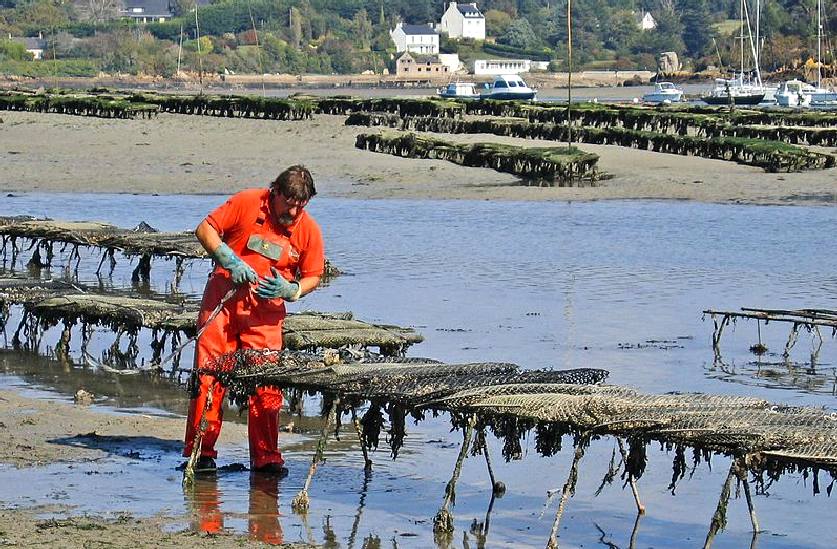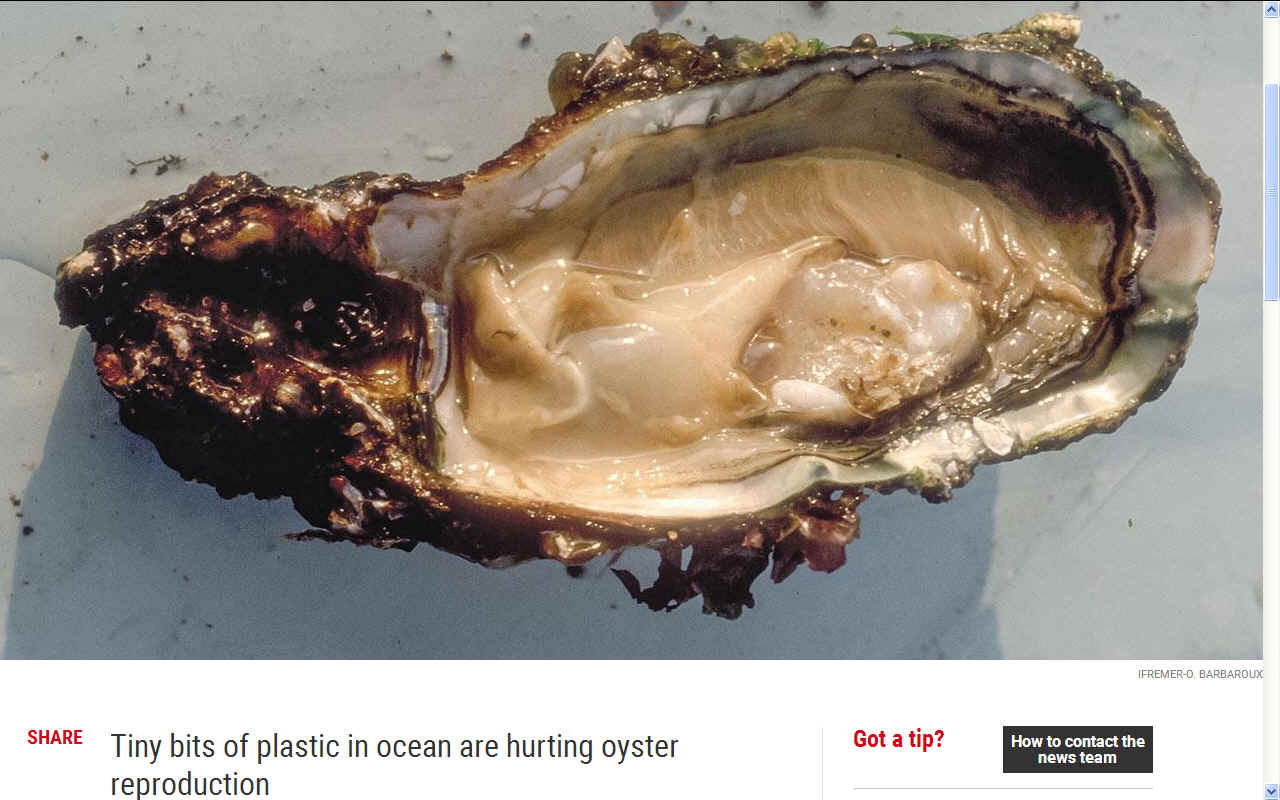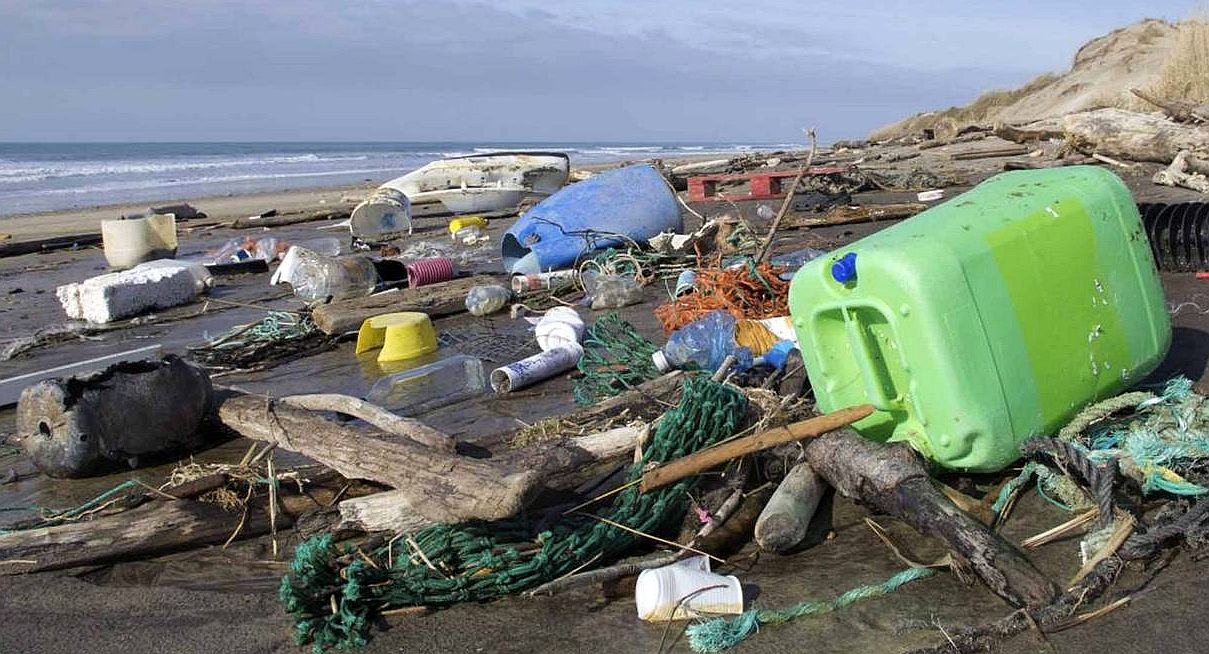|
OYSTERS
ABOUT - HOME - WHALING - A-Z INDEX
Anchovies | Bass | Bream | Catfish | Clams | Cod Coley | Crabs | Crayfish | Eels | Grouper | Haddock | Hake | Halibut | Herring | Jellyfish Krill | Lobster | Mackerel | Marlin | Monkfish | Mullet | Mussels | Oysters | Perch | Plaice | Pollock | Prawns | Rays | Sablefish | Salmon Sardines | Scallops | Sharks | Shrimp | Skate | Sole | Sprat | Squid | Sturgeon | Swordfish | Trout | Tuna | Turbot | Whiting
OYSTERS - Plastics are persistent synthetic polymers that accumulate as waste in the marine environment. Microplastic (MP) particles are derived from the breakdown of larger debris or can enter the environment as microscopic fragments. Because filter-feeder organisms ingest MP while feeding, they are likely to be impacted by MP pollution. To assess the impact of polystyrene microspheres (micro-PS) on the physiology of the Pacific oyster, adult oysters were experimentally exposed to virgin micro-PS (2 and 6 µm in diameter; 0.023 mg·L−1) for 2 mo during a reproductive cycle. Effects were investigated on ecophysiological parameters; cellular, transcriptomic, and proteomic responses; fecundity; and offspring development. Oysters preferentially ingested the 6-µm micro-PS over the 2-µm-diameter particles. Consumption of microalgae and absorption efficiency were significantly higher in exposed oysters, suggesting compensatory and physical effects on both digestive parameters. After 2 mo, exposed oysters had significant decreases in oocyte number (−38%), diameter (−5%), and sperm velocity (−23%). The D-larval yield and larval development of offspring derived from exposed parents decreased by 41% and 18%, respectively, compared with control offspring. Dynamic energy budget modeling, supported by transcriptomic profiles, suggested a significant shift of energy allocation from reproduction to structural growth, and elevated maintenance costs in exposed oysters, which is thought to be caused by interference with energy uptake. Molecular signatures of endocrine disruption were also revealed, but no endocrine disruptors were found in the biological samples. This study provides evidence that micro-PS cause feeding modifications and reproductive disruption in oysters, with significant impacts on offspring.
In an effort to feed a growing population we should look at alternatives lower down the food chain to increase the ratio at which protein is harvested from the ocean, so bypassing the conventional food chain where at each stage of consumption there are significant losses in the conversion process. Oysters could play a part in filling the widening gap between falling fish stocks such as tuna, and higher demand to feed humans.
Unfortunately, filter feeders cannot escape waste that humans flush into the oceans, having no choice but to live in the pollution that humans create, including pharmaceuticals. The effects of these medications, including cocaine, are not yet fully understood. Obviously, we need to keep an eye on this phenomenon.
Eating, for an oyster, is pretty simple: Take water in, keep the tasty plankton, and spit water out. Increasingly, however, these mollusks are exposed to tiny pieces of plastic the same size as oysters’ preferred plankton meals. More plastic from various products and industrial processes ends up in the oceans each year, and over time, this waste breaks down into smaller and smaller pieces. In a study published online today in the Proceedings of the National Academy of Sciences, researchers show that when Pacific oysters (shown) are exposed to so-called microplastics in the lab, they ingest a large proportion: 69% of the 6-micrometer particles added to the water. These end up in the oysters’ guts and make the animals invest less energy in reproduction, either by disrupting their digestion or their hormone systems. Female oysters exposed to microplastics made 38% fewer eggs, and males made sperm that were 23% slower. Plus, they had fewer offspring, which were themselves slower to reach maturity. This could create difficulties for aquaculture—Pacific oysters are grown for food around the world, and other filter feeder favorites such as mussels and sea cucumbers may be similarly affected.
DELICIOUS PLATTER - If we want to continue to enjoy healthy ocean harvests, we must take a leaf from the oyster's book and filter the oceans of harmful marine plastic.
PLASTIC SHELLFISH
When waste plastics – like polystyrene – find their way into bodies of water, they degrade into microscopic particles known as microplastics. These tiny particles range from about 2-6 micrometers in width, which is up to about 0.0002 inch, or less than a fifth of the width of a human hair. Industrial processes, clothing and waste plastic, and cosmetics in sewer water all contribute to a massive influx of the plastic particles into lakes and oceans. A particular concern is whether filter feeding aquatic life – such as as clams, oysters, barnacles, corals, sea squirts, and sponges – will be harmed from ingesting these plastics. Few studies have shown a direct effects on marine animals, but now a new study, published in the Proceedings of the National Academy of Sciences, does find a negative impact from plastics on the reproductive health of oysters.
Rossana Sussarellu and colleagues from France and Belgium performed some simple yet effective experiments to the role of plastics on the eating and reproductive behavior of these filter feeders.
The experiments consisted of raising oysters in the lab with simulated ocean water, with and without microplastics. One finding was that the oysters exposed to the plastics ate more microalgae than the control group. The authors speculate that this was to compensate for the negative impact plastics had on energy uptake by the oysters. Essentially, they had to eat more to get the same amount of energy.
There was also a shift in how oysters spent their energy uptake, shifting it away from reproductive development to structural growth. This was manifest in female oysters producing 38% fewer oocytes (eggs) and male oyster sperm velocity declining 23%. Overall, the production of larvae in oysters exposed to these plastics was 41% lower than the control animals.
Perhaps most troubling about these results is that the lab-grown oysters were only exposed to plastic concentrations of 0.01 milligrams of microplastics per liter of water, which is far lower than the 0.8 to 2,500 milligrams plastic per liter exposure reported in the wild for other marine invertebrates in contaminated waters.
If small amounts of microplastics can have such drastic effects on oyster feeding and reproduction, higher amounts of exposure may seriously harm wild oyster populations. By Benjamin D. Duval
ABOUT OYSTERS
Oyster is the common name for a number of different families of salt-water bivalve molluscs that live in marine or brackish habitats. In some species the valves are highly calcified, and many are somewhat irregular in shape. Many, but not all, oysters are in the superfamily Ostreoidea.
AQUACULTURE - Farming oysters will not change the fact that plastic in the ocean will still be ingested by these and other filter feeders.
OYSTER
FISHING
OYSTER FARMING
LINKS & REFERENCE
http://earthsky.org/earth/plastics-in-ocean-harm-oysters https://en.wikipedia.org/wiki/Oyster
MARINE LIFE - Humans are for the most part unaware of the harm their fast-lane lifestyles are causing. We aim to change that by doing all we can to promote ocean literacy. This includes spreading the news about foods that are good for us and good for the ocean economy.
Anchovies | Bass | Bream | Catfish | Clams | Cod Coley | Crabs | Crayfish | Eels | Grouper | Haddock | Hake | Halibut | Herring | Jellyfish Krill | Lobster | Mackerel | Marlin | Monkfish | Mullet | Mussels | Oysters | Perch | Piranha | Plaice | Pollock | Prawns | Rays | Sablefish | Salmon Sardines | Scallops | Sharks | Shrimp | Skate | Sole | Sprat | Squid | Sturgeon | Swordfish | Trout | Tuna | Turbot | Whiting
This website is provided on a free basis as a public information service. Copyright © Cleaner Oceans Foundation Ltd (COFL) (Company No: 4674774) 2022. Solar Studios, BN271RF, United Kingdom. COFL is a charity without share capital.
|
